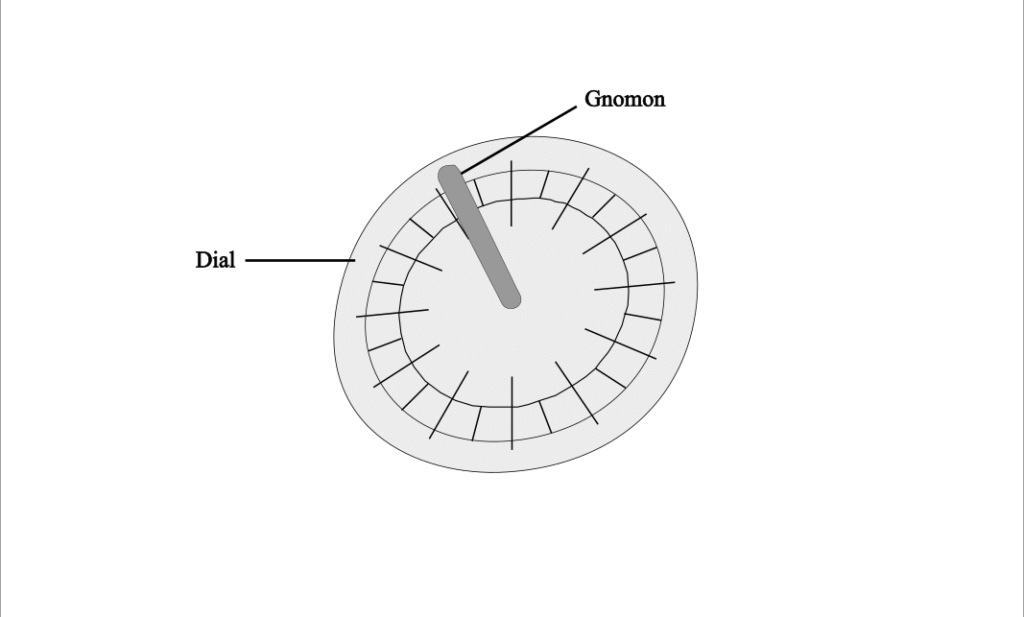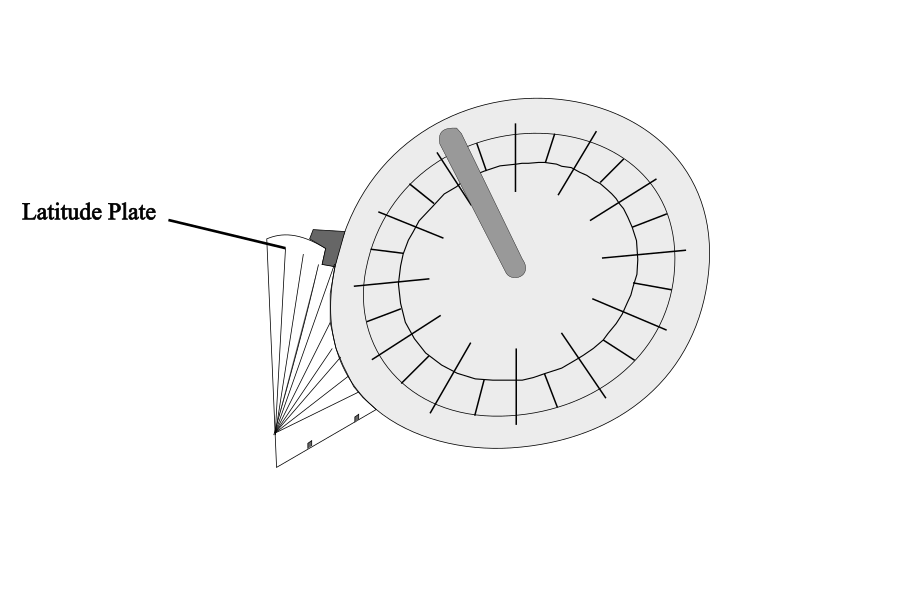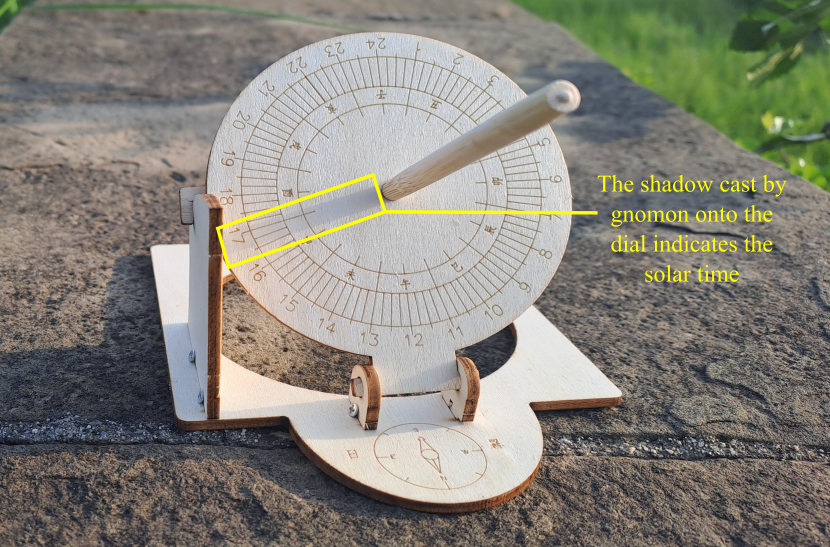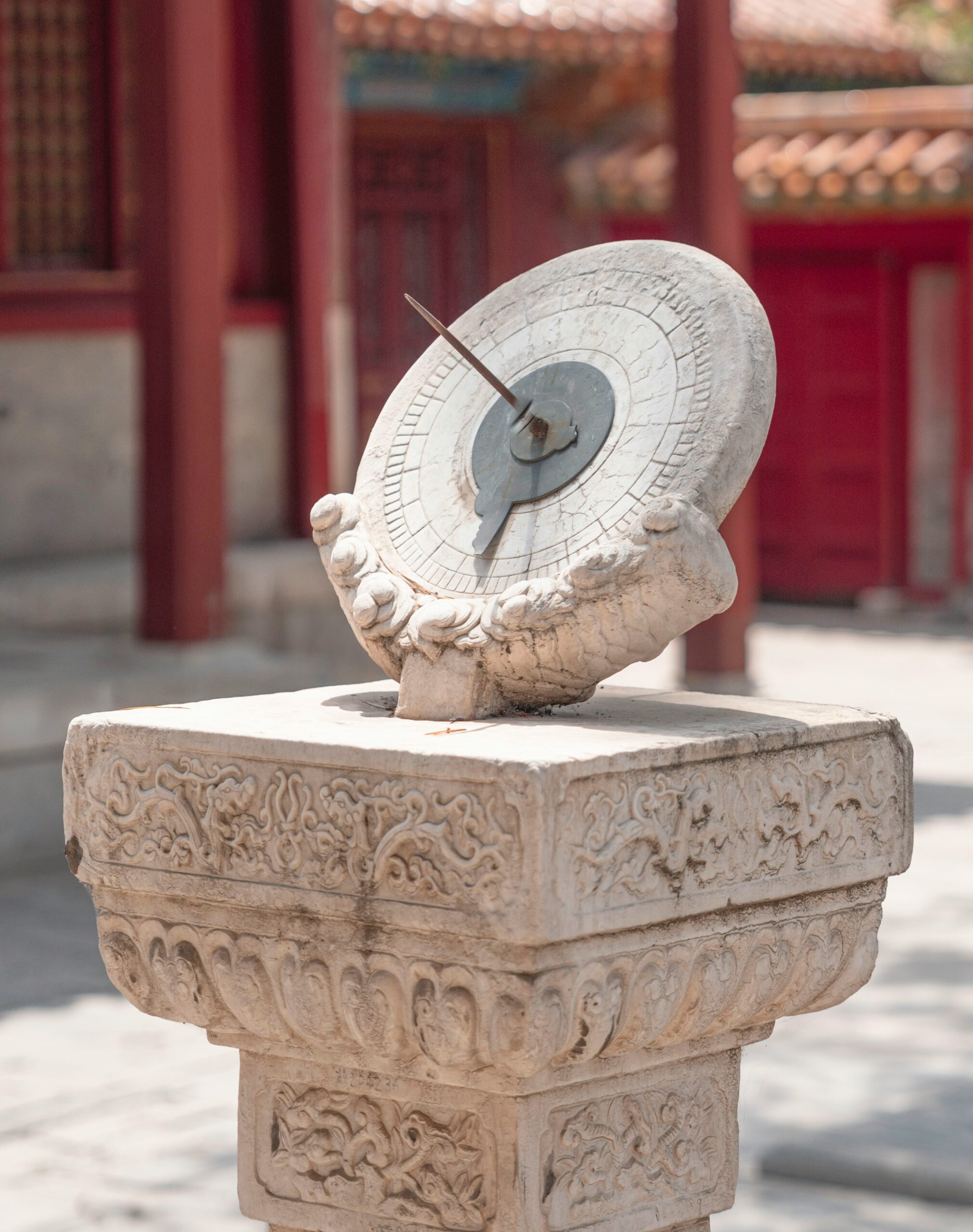A sundial is an ancient timekeeping device which uses the position of the sun to indicate the time of day. It has been in use well before the advent of mechanical clocks.
Sundial typically has two components namely a flat plate usually known as the dial and a stick or triangular piece called as gnomon. The dial has markings labeled with digits that represent the hours.

Some sundial may have a third component which is a latitude plate. This is used to adjust a sundial according to the latitude of one’s location.

Remember the sundial measure the solar time which may vary from your local time zone due to the Earth’s elliptical orbit and axial tilt.
How to use sundial?
Place the sundial on flat surface such that gnomon must be aligned with Earth’s North pole if you are living in northern hemisphere or with Earth’s South pole if you are living in Southern Hemisphere.
- As the sun moves across the sky from east to west, the gnomon casts a shadow on the dial.
- The dial is marked with the lines indicating the hours. The position of the shadow on these lines tells the time. The markings on the dial are usually spaced unevenly because the sun’s apparent motion across the sky is not uniform throughout the day and year.

As shown in the above picture the sun dial shows the time of slightly before than 1700 hrs.
Note: The sundial measure the solar time which may vary from your local time zone due to the Earth’s elliptical orbit and axial tilt.

